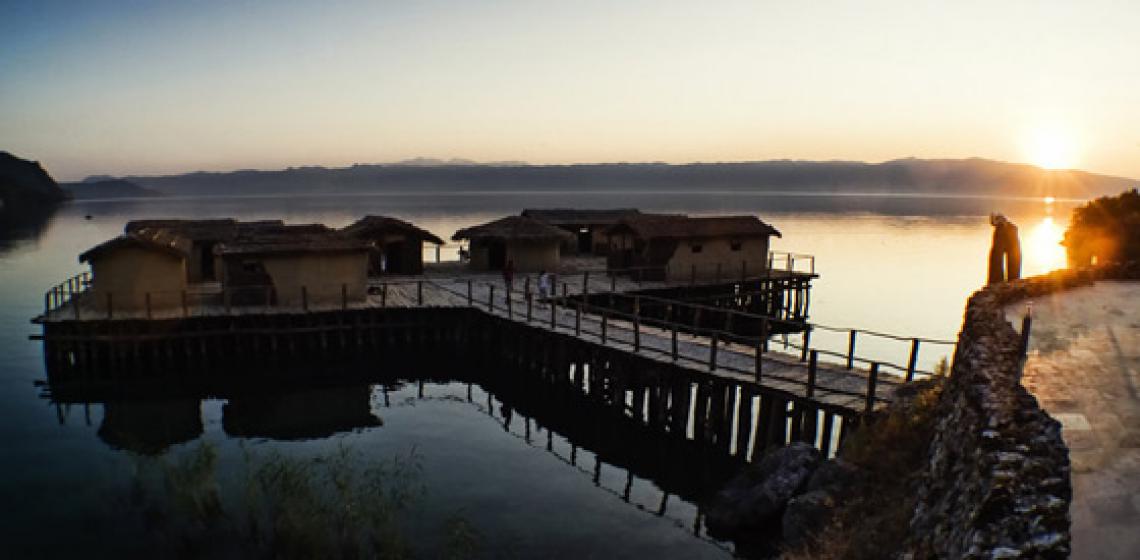Museum on Water ”Bay of the Bones” (MK)

An interesting lake dwelling reconstruction museum can be found at Ohrid Lake, one of the oldest and deepest lakes of Europe, at the border between Macedonia and Albania. This area has attracted tourists for centuries. The Museum on Water is still under expansion and should count about 16 dwellings later on.
The museum (Музеј на вода „Залив на коските“) is managed by the National Institution Institute for Protection of Monuments of Culture and Museum - Ohrid. The archaeological open air museum has the nearby underwater archaeological site Plocha Michov Grad as main source, 8,500 square metres large and dating to the Bronze and Iron Age, 1200 – 700 BC. In this period, the Bryges people left to Asia Minor and founded Phrygia in Anatolia.
The Plocha Michov Grad has been excavated underwater since 1997 and meant the start for submarine archaeological research in Macedonia. 6,000 piles were discovered so far at a depth of 3-5 metres, probably a platform once stood here with about 20 houses on it. Many artefacts were discovered, mainly pottery sherds and some complete vessels, stone and flint objects, a few bronze artefacts, many fragments of animal bones some of which used as tools. At some places, the culture layer was 1.5 metres thick.
The platform on which the museum houses are built is about 15-20 metres away from the shore at a level of about 1.5 metres above water level. Two of the houses have circular form and a diameter between 3.5 – 4.5 m; three are square with base dimensions of 4, 0 - 5,0 m and three rectangular ones with dimensions 4.0 h 8.0 m. They are built on wooden supports with wattle and daub walls. The interconnection is made with ligatures, wooden forked objects and animal skin. The roof constructions made out of wooden beams and thinner branches are covered with straw or reed. The height of the houses is 3.0 to 4.5 m. The interior of the larger houses represent a prehistoric ambiance: beds of animal skin, tools and other objects similar to the original artefacts discovered in the course of the underwater archaeological investigations. The settlement is connected with the shore via a wooden bridge with a mechanism for partial lifting and lowering.
On a plateau at the hill next to the lake dwelling museum, walls of a castrum (Roman military fortification) have been conserved and accentuated by partly rebuilding. The Roman site is called Gradishte and it is connected to the lake dwelling area by means of a wide path with stone slabs. The idea is to enable the visitors to “visit the times” showing the past of the region, a mix of Slavic, Roman and prehistoric elements.
A diving station for submarine archaeological research and underwater tourism exists as well. Thisis included in the main museum building on shore. The main museum building also has a little shop and coffee bar.
Picture by BobRock99
